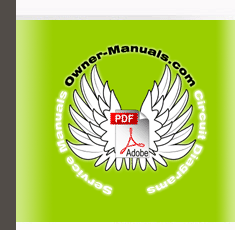|
|
|
Categories
|
|
Information
|
|
Featured Product
|
|
|
 |
|
|
There are currently no product reviews.
 ;
Thr Video Recorder i have is quiet Old and the Producer could Not help me. So i w as very glad to find an offer for the owners Manual for a very fair Price.a I obtained the original Manual very quick and I am happy to have it now.
 ;
The PDF copy was immediately available on download after the payment. However, I noticed that the document was in German, and Ihad to contact a German translator to get it translated it to English. The quality of document is legible can be used for my purpose.
 ;
The manual was complete and of great quality. Originally a tri-lingual file, I first received only one language. After a note to owners-manuals.com, I quickly received the remaining languages... Great service, definitely worth it.
 ;
Thank you for providing this manual and at low cost.
The Philips scope is of excellent quality, longevity and build and had a couple of faults
when it was passed to me. Having the CCT diagrams is a blessing.
I have fixed the problems and also modded the scope to my requirements.
I have built a 24v Li-Ion pack for portable use from old but good laptop batts.
it is working beautifully and I am well pleased. Keep up the good work Guys.
 ;
manual was very helpful in learning how to propery use my washer. I could not find this manual anywhere else.
Positioning the Resound
Microphone Positioning - How to Reduce Feedback Feedback is the annoying howling and squealing that is heard when the microphone gets too close to the speaker and the volume is high. You get feedback when the microphone picks up the amplified signal from the speaker, and then amplifies through the speaker again, and then picks it up again, and so on and so on. In general, it is always recommended that any LIVE mic (a mic that�s on) is positioned behind the speaker enclosures. This will give you the best level from your system before feedback. One possible exception is when you are adjusting the sounds of the microphones, since you want to listen in front of the speaker to hear properly. To do this, lower the MAIN VOLUME while setting the EQ and effect from in front of the speakers. Once you have the sound you like, move the microphones to behind the speakers and raise the Main volume. Speaker Placement Whenever possible, it is a good idea to raise the speakers above the heads of the listening audience. The Resound enclosure features a standard 1 3/8� pole mount receptacle, which is compatible with speaker stands from a variety of manufacturers. Using the Resound as a Floor Monitor The Resound RS10M, RS12M and RS15M are ideal solutions for stage monitoring and thanks to the unique design of the RS10M and RS12M, two wedge monitor positions are possible. When placed on its side with the high frequency horn facing to the left of the enclosure, the RS10M and RS12M are tilted at a 25 degree angle optimizing performance when used on a small stage. When the monitors are placed on their side with the high frequency horn facing to the right of the enclosure, they are tilted at a 30 degree angle optimizing performance when used on larger stages. The RS15M features a wide dispersion pattern and is configured with a 30 degree angle making them FAR FIELD ideal for electronic drum and keyboard monitors. In a large stage monitor system, several Resound�s can be daisy-chained together using the EXTENSION SPEAKER output. Note: Be sure to check the manufacturers minimum recommended impedance for your power amplifier to avoid overload and possible damage to both the speaker and STAGE MONITOR POSITION amplifier. In many instances when using 25 DEGREES
NEAR FIELD
STAGE MONITOR POSITION 30 DEGREES
the Resound as a monitor system, you may choose to use an external equalizer like the Samson S Curve 131 to increase the volume and reduce the chance of feedback.
7
|
|
 |
> |
|
